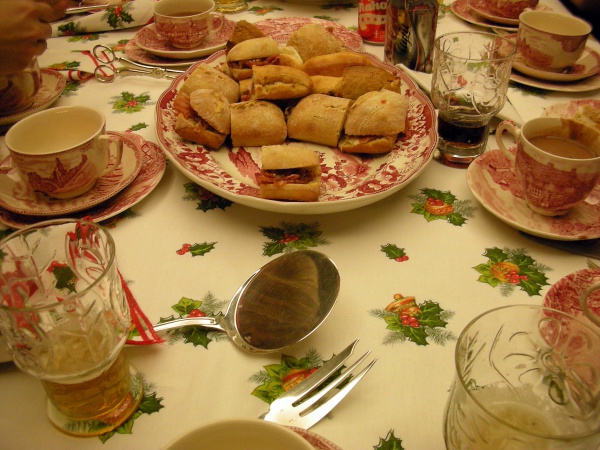Facts About Merienda
Merienda is a delightful light meal enjoyed in various parts of the world, particularly in southern Europe and Hispanic countries. It's a beloved tradition in Spain, Portugal, Italy, Andorra, Hispanic America, the Philippines, and Brazil. Typically taken in the afternoon or as a mid-morning snack, merienda serves as a bridge between lunch and dinner. The fare is simple yet satisfying—think fruit, cookies, yogurt, and various snacks, all paired with drinks like juice, hot chocolate, coffee, or even spirits.
In Argentina and Uruguay, a similar tradition called "once" or "merienda" takes place around 5 PM. This often involves a warm drink like tea or mate, accompanied by baked treats such as scones or cake.
The Philippines has its unique take on merienda, offering two light meals: a morning snack akin to brunch or a second breakfast, and an afternoon tea-like snack. There's also "merienda cena" an early evening snack before dinner. The portions are smaller than a full meal and are typically enjoyed with a hot or cold beverage. Options range from sweet to savory—bread, pastries, desserts, street food, and noodle dishes are all popular choices.
In coastal areas of Croatia, Slovenia, and Corfu in Greece, the concept is known as "marenda." It's enjoyed between breakfast and lunch, often consisting of light snacks like sandwiches or toast during work breaks.
France has its version called "goûter" or "quatre-heures" usually observed around 4 PM, especially by children. Historically, it was a full meal until the 18th century. In Poland, merienda is known as "podwieczorek" or "jużyna" taken in the late afternoon as a light snack between lunch and dinner. Common treats include ice cream, fruit, cookies, and a variety of hot or cold drinks. Some regions in Poland have special variations like the bambrzak potato pancake, enjoyed on Sundays and holidays during afternoon tea.
No matter where you are, merienda is a cherished time to relax and enjoy a little something to tide you over until the next meal.

 Bolivia
Bolivia